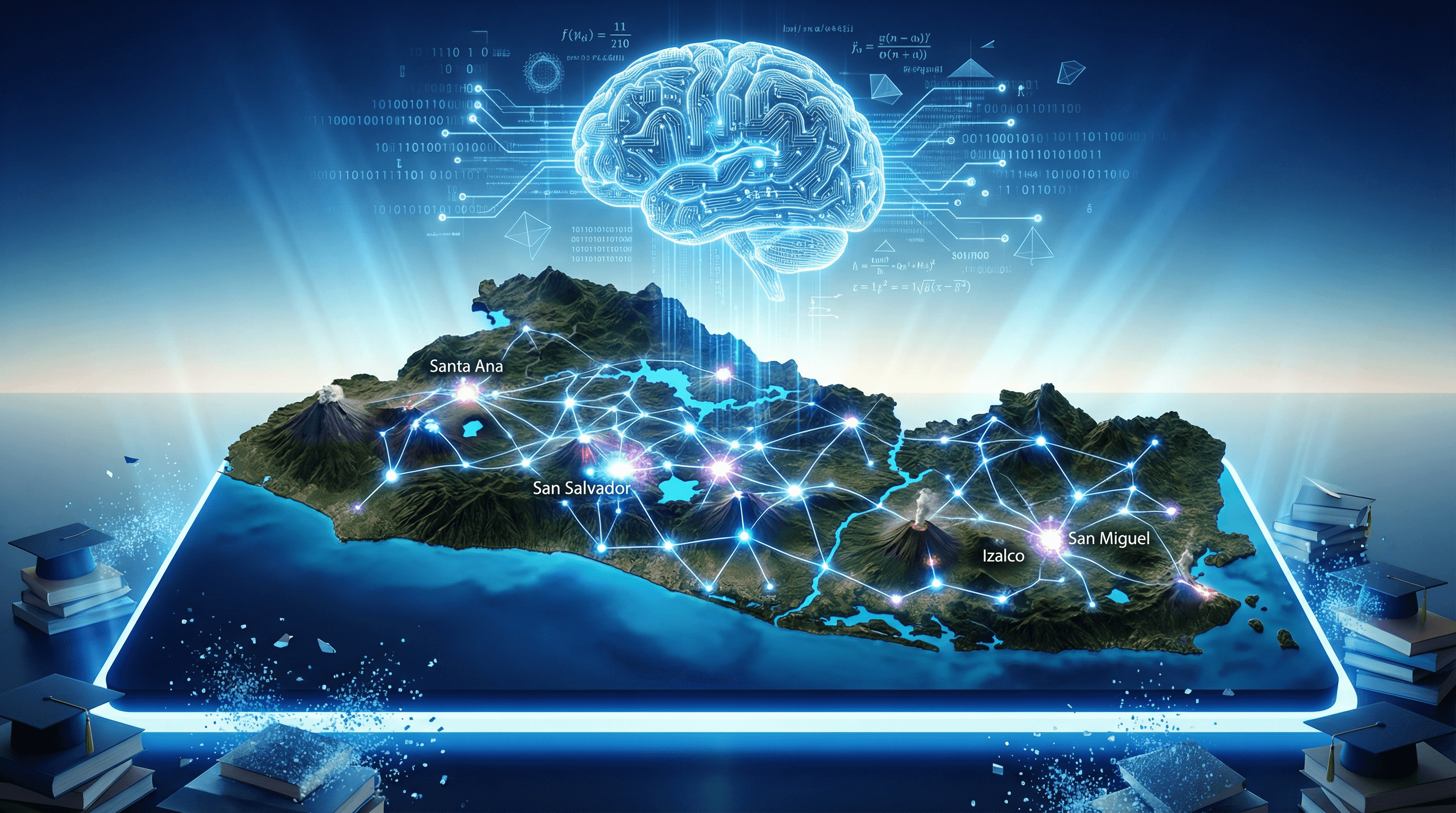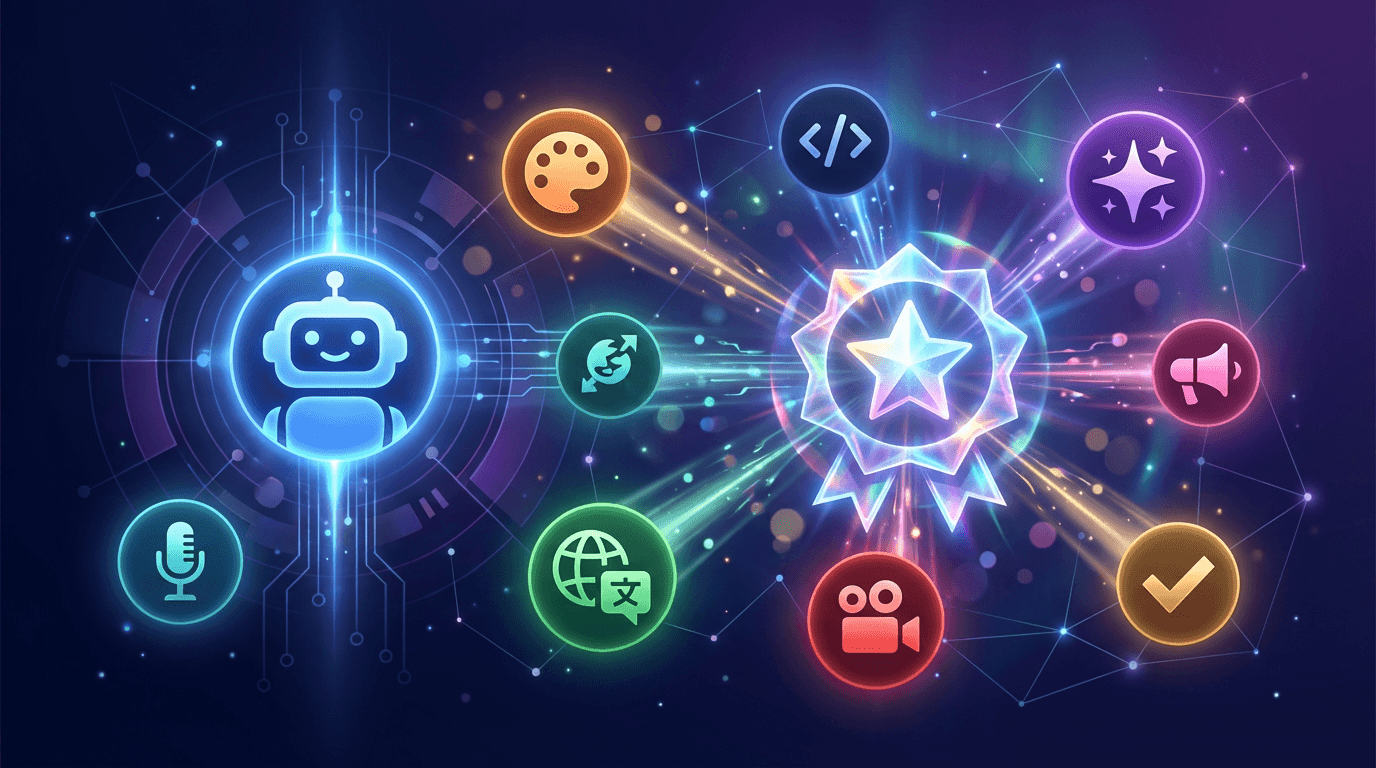When we think of Artificial Intelligence today, our minds often jump to chatbots that can write poetry or algorithms that generate fantastical images. These are, without a doubt, impressive feats of engineering. But to see them as the pinnacle of AI's potential is like looking at a steam engine and seeing only a carnival ride. The true revolution, the one that will fundamentally reshape our world, is happening in a place far less visible to the public: the research lab.
Just as the microscope opened up the invisible world of the cell and the telescope revealed the vastness of the cosmos, a new generation of AI tools is giving scientists an unprecedented ability to see and understand the complex systems that govern life and the universe. These are not just tools for analysis; they are partners in discovery, capable of identifying patterns in massive datasets that would be impossible for the human mind to grasp.
This is not science fiction. It is happening right now. From the intricate wiring of the brain to the fundamental building blocks of matter, AI is accelerating the pace of discovery at a breathtaking rate. Let's explore three recent breakthroughs that showcase the profound power of this new scientific revolution: a "ChatGPT for cells" that is mapping the brain, an AI that solved a 50-year-old problem in biology, and a deep learning model that has discovered materials that could power our future.
Charting the Brain's Unseen Territories with CellTransformer
For centuries, neuroscientists have been on a quest to create a complete map of the brain. It's a monumental task, akin to mapping a galaxy of 86 billion stars, each with thousands of connections. Traditional methods have been slow and painstaking, relying on human experts to identify and annotate different brain regions manually. But a new AI model, developed by researchers at the University of California, San Francisco (UCSF) and the Allen Institute, is changing the game.
They call it CellTransformer, and it's a powerful AI built on the same "transformer" architecture that powers large language models like ChatGPT. But instead of analyzing the relationships between words in a sentence, CellTransformer analyzes the relationships between cells in a tissue sample. By studying the "neighborhoods" of cells and their molecular features, it can automatically identify distinct regions and subregions of the brain with incredible precision.
"It's like going from a map showing only continents and countries to one showing states and cities," said Dr. Bosiljka Tasic, a director at the Allen Institute and one of the study authors.
The result is one of the most detailed and complex data-driven maps of the mouse brain ever created, revealing 1,300 distinct regions and subregions—many of which were previously uncharted. This isn't just about adding more detail to an existing map. It's about discovering entirely new territories in the brain, each with potentially specialized functions. This breakthrough, published in Nature Communications in October 2025, provides a roadmap for new hypotheses and experiments, allowing researchers to link specific functions, behaviors, and diseases to smaller, more precise cellular regions.
The implications are profound. By understanding the brain at this granular level, we can gain new insights into neurological conditions like Alzheimer's, Parkinson's, and other movement disorders. And because CellTransformer is "tissue agnostic," it can be applied to any organ system, opening up new avenues for cancer research and understanding disease progression. The model doesn't just work on brain tissue, it can map any organ or even cancerous tissues, helping researchers understand the biology of health and disease in unprecedented detail.
Solving Biology's 50-Year-Old Grand Challenge with AlphaFold
Proteins are the building blocks of life, microscopic machines that carry out virtually every function inside our cells. Their intricate 3D shape determines their function, but for 50 years, predicting that shape from a protein's amino acid sequence was a grand challenge in biology. Experimental methods could take years and cost hundreds of thousands of dollars for a single protein. Then, in 2020, Google DeepMind unveiled AlphaFold.
AlphaFold is an AI system that can predict a protein's 3D structure with astonishing accuracy, often in a matter of minutes. The breakthrough was so significant that it was hailed as a solution to the protein folding problem. As Professor John McGeehan, a structural biologist, put it:
"What took us months and years to do, AlphaFold was able to do in a weekend."
DeepMind didn't keep this breakthrough to themselves. They made AlphaFold freely available to the scientific community and used it to predict the structures of over 200 million proteins, nearly every cataloged protein known to science. This massive database, accessible to millions of researchers in 190 countries worldwide, has potentially saved millions of dollars and hundreds of millions of years in research time.
Scientists are now using AlphaFold to accelerate drug discovery by understanding the shape of proteins involved in diseases like malaria and Parkinson's, allowing them to design drugs that target them more effectively. Researchers are combating antibiotic resistance by using AlphaFold to understand the proteins that bacteria use to resist antibiotics, paving the way for new treatments. Environmental scientists are fighting plastic pollution by using AlphaFold to design new enzymes that can break down plastic waste, addressing a crisis where 91% of all plastic ever produced has never been recycled.
The innovation continues. The latest version, AlphaFold 3, released in 2024, can now predict the structure and interactions of all of life's molecules, including DNA, RNA, and ligands, opening up even more possibilities for scientific discovery. From developing vaccines that could save hundreds of thousands of lives to increasing honeybees' chances of survival, AlphaFold is transforming nearly every field of biology.
Discovering the Materials of Tomorrow with GNoME
From the batteries in our electric cars to the chips in our smartphones, modern technology is built on a foundation of inorganic crystals. But discovering new materials with the right properties is a slow, expensive, and often serendipitous process of trial and error. At least, it used to be.
In late 2023, researchers from Google DeepMind unveiled another groundbreaking AI: Graph Networks for Materials Exploration (GNoME). In a paper published in Nature, they revealed that GNoME had discovered 2.2 million new crystal structures, equivalent to nearly 800 years of human knowledge.
Of these, 380,000 are stable materials that could be synthesized in a lab and used to power future technologies. This is a monumental leap forward. Before GNoME, the scientific community knew of only about 48,000 stable crystals. The AI model didn't just add to our knowledge; it increased it by an order of magnitude, expanding the number of stable materials known to humanity to 421,000.
How does it work? GNoME uses a form of AI called a graph neural network (GNN) to predict the stability of new materials. It was trained on existing data from the Materials Project and then used an active learning process to rapidly improve its predictions. The model's accuracy increased from around 50% to 80%, dramatically reducing the computational resources required per discovery. The results were so accurate that external researchers, working independently in labs around the world, had already created 736 of GNoME's predicted materials.
Among the discoveries are 52,000 new layered compounds similar to graphene, which could revolutionize electronics with the development of superconductors. Previously, only about 1,000 such materials had been identified. The model also found 528 potential lithium-ion conductors, 25 times more than previously known, which could lead to better, safer, and more efficient batteries for electric vehicles.
Just as with AlphaFold, DeepMind has made the GNoME data freely available to the research community through the Materials Project database, empowering scientists to start experimenting with these new recipes for the materials of the future. In a powerful demonstration of this new paradigm, an autonomous robotic lab called A-Lab at Lawrence Berkeley National Laboratory has already used GNoME's predictions to automatically synthesize over 41 new materials. AI-guided robots are now making materials autonomously, demonstrating that AI-driven materials synthesis is not just theoretical; it's viable and happening today.
The Dawn of a New Scientific Era
CellTransformer, AlphaFold, and GNoME are not isolated examples. They are harbingers of a new era in science, one in which AI serves as a powerful collaborator, augmenting human intellect and accelerating the pace of discovery. These tools are allowing us to see the hidden patterns in the universe, from the inner workings of our brains to the fundamental laws that govern matter.
What these breakthroughs have in common is not just the use of sophisticated AI, but a commitment to open science. By making their models and data freely available, these research teams are creating a force multiplier for innovation, empowering a global community of scientists to build on their work. This democratization of knowledge is perhaps as important as the discoveries themselves.
The applications extend far beyond the laboratory. AI is transforming weather forecasting, with models that can predict extreme weather events and simulate 1,000 years of climate in just 12 hours on a single processor. In healthcare, AI imaging algorithms are improving cancer detection and helping doctors predict patient outcomes with unprecedented accuracy. In education, AI-powered personalized learning systems are adapting to individual student needs, significantly improving learning outcomes while allowing teachers to focus on human connection and mentorship.
As educators, leaders, and innovators, our role is not to fear this transformation but to embrace it thoughtfully. Just as we've explored in previous discussions about AI in education, the key is not to replace human thinking but to augment it. These scientific breakthroughs show us what's possible when we combine human creativity and intuition with the pattern-recognition capabilities of AI. The question is not whether AI will transform our world, it already is. The question is how we will harness this power to build a better future for all of humanity.
References
1.Allen Institute. (2025, October 7). Scientists create ChatGPT-like AI model for neuroscience to build detailed mouse brain map. Retrieved from
2.Lee, A. J., et al. (2025). Data-driven fine-grained region discovery in the mouse brain with transformers. Nature Communications, 16, Article 8536.
3.Google DeepMind. (n.d.). AlphaFold: Accelerating breakthroughs in biology with AI.
4.Jumper, J., et al. (2021). Highly accurate protein structure prediction with AlphaFold. Nature, 596, 583–589.
5.Merchant, A., et al. (2023). Scaling deep learning for materials discovery. Nature, 624, 80–85.
6.Google DeepMind. (2023, November 29). Millions of new materials discovered with deep learning.





